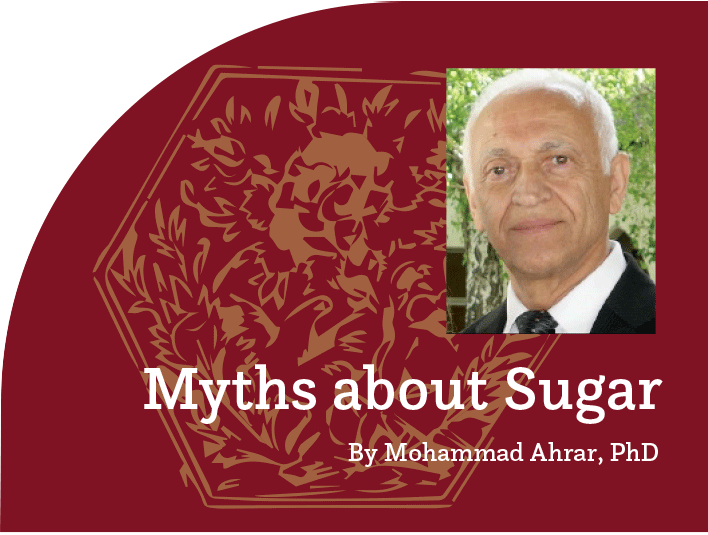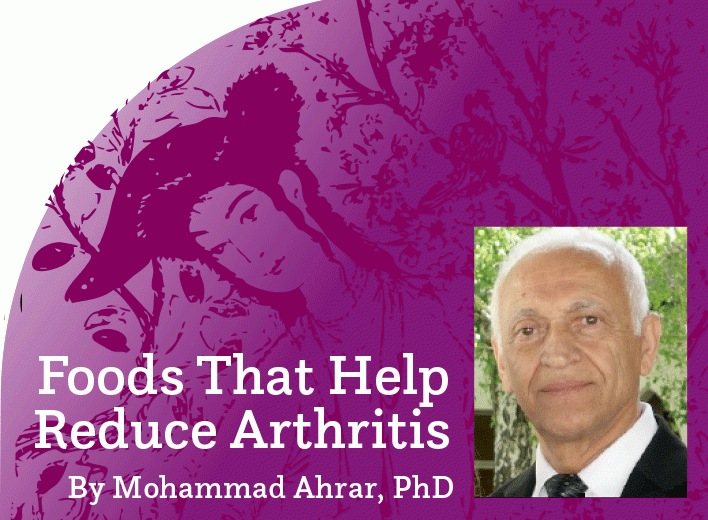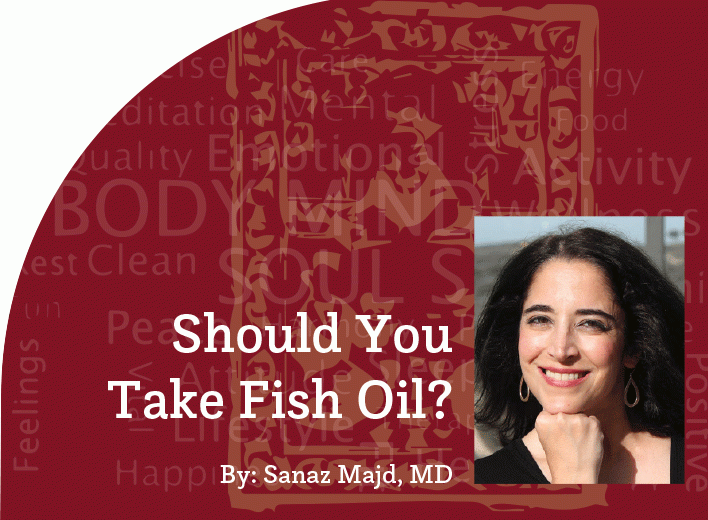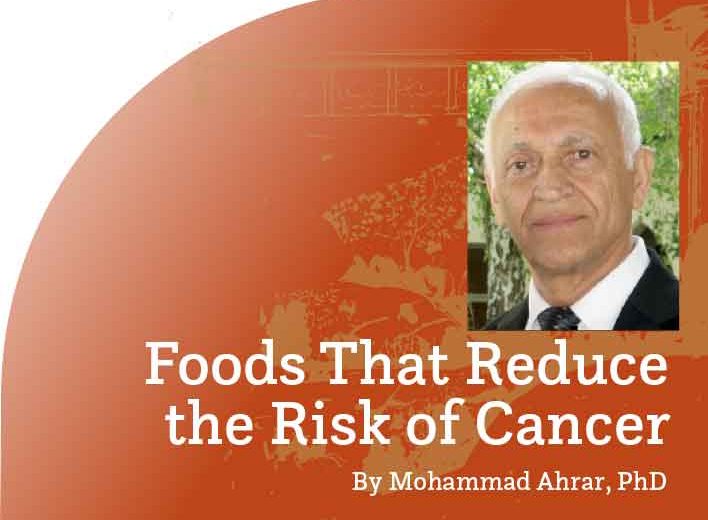Educational Series
The Science of Nutrition
Myths about Sugar
By Mohammad Ahrar, PhD
 Introduction
Introduction
The general belief is that consuming foods high in sugar can cause weight gain and health complications. The idea is not far from true, however, there is more to learn about sugar. This article will discuss some facts about sugars and their role in the body.
What is Sugar?
Sugars are synonymous with carbohydrates (commonly known as carbs). The common sugar (table sugar) is one of the many types of carbohydrates. Cellulose, plant fibers, starch, and animal glycogen are also considered sugar.
Carbohydrates are made of simple sugars (monosaccharides) such as glucose, fructose, and galactose, each containing six carbons. Glucose and fructose taste sweet. Some other types of simple sugars, such as ribose and deoxyribose, contain five carbons. They are not sweet, but play a major role in DNA formation.
Complex Sugars
When two simple sugars are combined, they form a disaccharide. Table sugar (or sucrose) is a disaccharide and is made of glucose and fructose. Milk sugar (or lactose) is made of glucose and galactose. When more than two simple sugars are combined, a polysaccharide (or a complex sugar) is formed. Wheat starch and cellulose are polysaccharides, made of hundreds of glucose molecules.
Which Sugar is Sweeter?
Fructose is the sweetest of all simple sugars. Glucose is less sweet than fructose. Sucrose’s sweetness is attributed to the presence of fructose. Most fruits contain fructose, with the ratio of fructose to glucose and other sugars varying by fruit. Generally, the higher the ratio of fructose to other sugars in fruits, the sweeter they are.
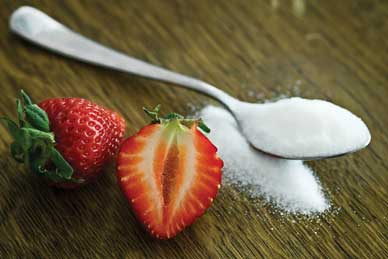
Why Do Humans Need Sugar?
The human body needs simple sugars to survive. All organs in the body use glucose as the main source of energy. The brain cells (neurons) depend on glucose for proper functions—the glucose level in the blood is closely linked to brain functions such as memory, learning, and thinking. Red blood cells require glucose to function and carry oxygen. Glucose is the primary energy source for muscles of the body, including the heart muscle that beats 100,000 times per day. The diaphragm, which is the primary muscle for breathing, requires glucose. The liver is the only organ in the body that uses fructose to synthesize many essential compounds.
How are Sugars Digested?
When complex carbohydrates—such as the starch in bread, rice, and pasta—are consumed, they are partially broken down into simpler sugars in the mouth by the salivary enzymes. However, most of the carbs are digested in the small intestine by the pancreatic and intestinal enzymes into simple sugars, absorbed by the small intestine, and carried to the liver by the veins surrounding the intestine. In the liver, some glucose is metabolized into many other compounds. Excess glucose can be converted to glycogen. Approximately 50% of the glucose ingested is stored as glycogen. If the glycogen reserve is full, glucose is converted into fat (referred to as lipogenesis).
The amount of glucose that leaves the liver enters the blood circulation and the hormone insulin facilitates the entry of glucose into the body cells. Inside the cells, glucose is broken down by enzymes and produces large amounts of chemical energy, heat, and other essential compounds.
Why Does Sugar Cause Weight Gain?
There are several reasons why sugary foods make you gain weight.
Portion size: The first and most important factor in gaining weight is excessive consumption of carbohydrates or sugary foods. Large portions can lead to overeating, which is a major contributor to weight gain. Besides, a large portion of food adds extra calories, which can lead to weight gain. More information about portion size is explained in Peyk #189.
Role of insulin: Shortly after consumption of carbs or sugary foods, the blood sugar (glucose) rises. As blood sugar increases, the pancreas releases large amounts of insulin. Insulin plays a different role in fat cells (adipocytes) than muscle cells or other tissues. Insulin triggers fat cells to convert glucose mainly into fat rather than energy. For this reason, insulin is known as a fat-producing hormone. The human body contains billions of adipocytes all over the body, surrounding the internal organs, the heart, the eye, and under the skin. As fat cells accumulate fat and grow bigger, a person will gain weight. More information about weight gain is discussed in Peyk #191 and #196.
Type of Sugar: When sugary foods are consumed, the sugar (sucrose) breaks down into glucose and fructose by intestinal enzymes. Usually, the glucose is absorbed and enters the liver for metabolism (explained earlier). However, the absorption and metabolism of fructose is different from glucose, as it is absorbed more slowly from the intestinal tract than glucose. Some fructose is absorbed and enters the liver, and some is carried to the large intestine. If the ratio of fructose to glucose is higher in foods, more fructose enters the large intestine.
In the liver, fructose triggers the production of cholesterol, triglycerides, and other fats before entering the blood circulation. When the levels of triglycerides and cholesterol in blood are elevated above the normal level, health complications can arise.
In the large intestine, fructose is fermented by bacterial enzymes and produces fatty acids, carbon dioxide, and other gases, which may result in bloat and discomfort. Cellulose and indigestible fibers also bypass digestion in the small intestine, enter the large intestine, and are degraded by bacterial enzymes.
Complex carbs, such as fiber, also pass through the small intestine undigested. When you eat vegetables and foods with a high fiber content, it delays absorption of some sugars and helps reduce the jump in blood glucose level.
What Happens if You Eliminate Carbs from the Diet?
If a diet does not contain any carbohydrates, the body can make glucose from other nutrients, mainly fats and proteins.
Fat as a Source of Energy: Fats are made of subunits called fatty acids. Each fatty acid is made of a chain of many carbons. The carbons from fatty acids can be converted into glucose in the liver cells. The body can also metabolize fats to produce energy. But the problem is that high-fat diets can raise the level of ketones and keto acids in the blood, which can in turn cause nausea, fatigue, loss of appetite, and ketoacidosis, which can lead to serious consequences such as coma and even death.
Protein as a Source of Energy: Proteins are made of amino acids. If a diet does not contain carbs, the liver uses amino acids and converts them into glucose; in the long term, the body can use proteins in the muscles. Without enough protein in the diet, the body loses muscle mass (sarcopenia) which causes severe health problems.
Artificial Sugars
Artificial sweeteners such as aspartame are much sweeter than table sugar, but do not elevate blood glucose levels. They are used in smaller amounts to achieve the same level of sweetness, while being more cost-effective. Sugar alcohols, such as sorbitol and xylitol, also taste sweet and do not increase blood sugar levels. Artificial sugars are used in the food industry and in some products such as toothpaste and cough syrups. More information about artificial sugars is discussed in Peyk #208.
High-fructose corn syrup is made from corn syrup, but for it to be sweeter, some of its glucose enzymatically is converted to fructose. Excessive consumption of sugar-sweetened beverages and foods may contribute to insulin resistance, obesity, and elevated LDL cholesterol.
Is Sugar from Fruits Better than Other Sugar?
Fruits usually contain balanced glucose and fructose. But they also provide vitamins and minerals. Fruits are also packed with antioxidants, which can reduce inflammation and boost your immune system. (Peyk #185, #205) Dried fruit and fruit juice are usually more calorie-dense and contain more sugar than their fresh counterparts. For that reason, they can elevate blood sugar faster. The sugar content and the ratio of glucose to fructose in fruits are listed in Peyk #193.
Summary
Common table sugar is one of the many types of carbohydrates. All organs and tissues in the body, such as the brain, the heart, and muscles, use sugar as their main energy source. Excessive intake of sugars in foods and beverages, however, can result in weight gain and health complications. Artificial sweeteners taste sweet, but do not increase blood sugar levels. Artificial sugars are used in the food industry in many products mainly for economic reasons.
____________________________________________________
References:
1- https://en.wikipedia.org/wiki/Fructose#:~:text=Fructose
2- https://www.ncbi.nlm.nih.gov/pmc/articles/PMC5537773/
3- https://www.medicalnewstoday.com/articles/does-your-body-need-sugar
4- https://pmc.ncbi.nlm.nih.gov/articles/PMC5293555/
5- https://www.health.harvard.edu/staying-healthy/which-is-better-high-fructose-corn- syrup-or-table-sugar

